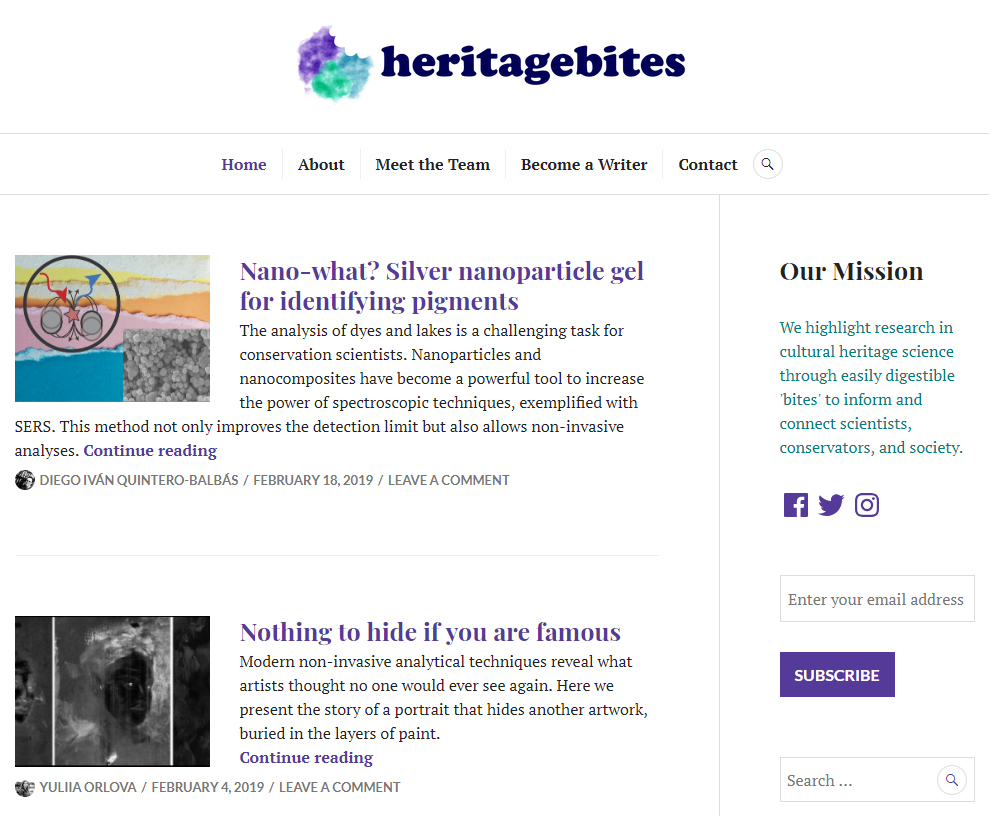Speaker: Teresa Duncan, Post-doctoral Fellow at the National Institute of Standards and Technology
Today, we are surrounded by a media environment that is perhaps best characterized as “mass-rapid,” describing the sheer quantity of information available and the pace at which it is delivered. It is increasingly a challenge for content providers and consumers alike to find curated and well-researched content in an easily digestible format. While conservation professionals may already be familiar with the traditional and established avenues of academic publishing and sharing through journals, workshops, and conferences, there has become greater interest in the informal sharing of news and information, evidenced by the activity of multiple groups and communities on social media platforms.

Teresa Duncan spoke about her motivation to bridge these two worlds that led her to create heritagebites.org, a portal that provides a space for the dissemination of current scientific research in cultural heritage with other allied professionals, including conservators, conservation scientists, and curators. Drawing from the aptly-named “bites” network that already exists for areas such as astrophysics (Astrobites), environmental science (Envirobites), evolutionary biology (Evobites), and more, Heritagebites serves bite-sized, easy-to-read summaries of recent advances in research contributed by a team of writers consisting of graduate students, post-doctoral fellows, and early career scientists at institutions around the world. Beyond outlining her motivations for creating the portal, Duncan also introduced her vision of the portal as a way of facilitating connections between conservation scientists and conservators. She hopes to recruit conservators to write for the portal in order to improve the diversity of its content, and also to encourage multilateral conversations across the disciplines.
In the discussion that followed, audience members suggested looking towards current platforms that aggregate abstracts of published journal articles such as AATA Online, a service by the Getty Conservation Institute, and BCIN, managed by the Canadian Heritage Information Network, for inspiration. It was suggested that perhaps Heritagebites could go one step further; to synthesize and contextualize several relevant recent articles on topics of interest in a “bite.”
Teresa Duncan is the editor-in-chief of heritagebites.org.
Summarized by Soon Kai Poh, Graduate Intern at the Freer Gallery of Art and Arthur M. Sackler Gallery, Smithsonian Institution, and Fourth-Year Graduate Student, Conservation Center, Institute of Fine Arts, NYU